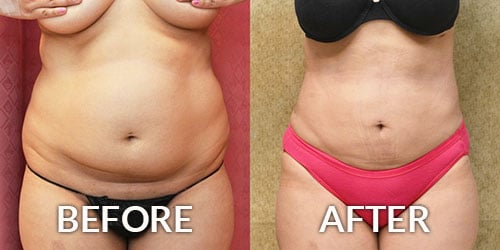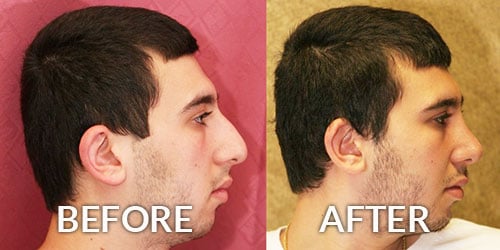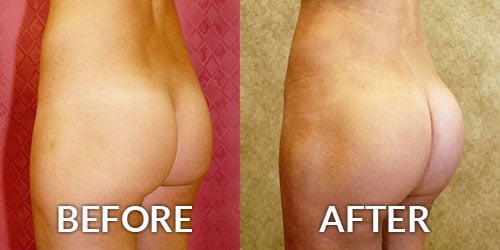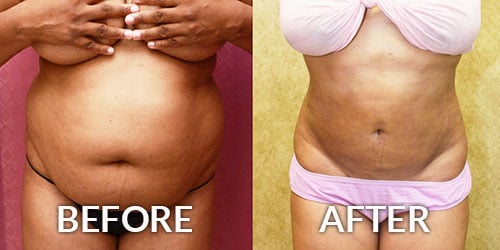Brow Lift
Consultations offered at our three convenient locations in Encino, Glendale and Bakersfield

The phrase “tired of looking tired” is one that Dr. Younai hears frequently when people first step into the consultation. With age, even a good night’s rest can’t correct the appearance of sagging brows and forehead wrinkles that make patients look tired, old, or angry. A brow lift is one of many facial rejuvenation procedures that Dr. Sean Younai performs to help his patients look as good on the outside as they feel on the inside.
Dr. Younai has four convenient locations to help serve his Southern California patients’ needs in Beverly Hills, Glendale, Encino, and Bakersfield. Contact one of his four offices today.
Contents
- 1 About Brow Lifts
- 2 Benefits
- 3 Botox Brow Lift vs Surgical Brow Lift
- 4 Good Candidates
- 5 Brow Lift Techniques
- 6 Procedure
- 7 Recovery
- 8 Additional Procedures
- 9 The Importance of The Type of Anesthesia That You Undergo
- 10 Consultation
- 11 Cost
- 12 FAQ
- 12.1 Will a Forehead Lift Remove Very Fine Lines?
- 12.2 Can Laser Resurfacing or Dermabrasion Remove Forehead Wrinkles?
- 12.3 How Long Does the Effects of a Forehead Lift last?
- 12.4 What are non-surgical Options to forehead lift?
- 12.5 Does Disabling the Frown and Forehead Muscles with Botox or a Forehead Lift/ Brow Lift “Freeze your Face”?
- 12.6 Can a Person Who Is Bald or Has a Receding Hairline Undergo a brow lift or Forehead Lift?
- 12.7 How Long Does A Forehead Lift Take?
- 12.8 What Kind of Anesthesia Will Be Used?
- 12.9 Can a Forehead Lift Be Combined With Other Procedures?
About Brow Lifts
Forehead Lift or Eyebrow Lift is a popular facial plastic surgery procedure design to raise heavy and drooping eyebrows to their normal youthful position. In doing so, a Brow Lift or Forehead Lift also softens forehead wrinkles, lines, and grooves that are made as a result of repetitive frowning or tensing of the forehead muscles. Women in Los Angeles or the entire Southern California get a Forehead Lift in order to smoothen their foreheads, get a more bright-eyed look, and to appear refreshed.
Generally, Forehead Lift patients are men and women between 40 to 60 years of age. Many people who think they need upper eyelid surgery actually have drooping brows that are causing the upper eyelid skin to bunch up over their eyes and impair their vision. Candidates for a Forehead Lift or Brow Lift in Los Angeles often have other signs of facial aging such as crow’s feet around their eyes, lower eyelid bags, and deep nasolabial folds. Most Beverly Hills Plastic Surgeons who specialize in Forehead Lift and Facial Plastic Surgery utilize a variety of Eyebrow Lift techniques depending on their patient’s individual needs.
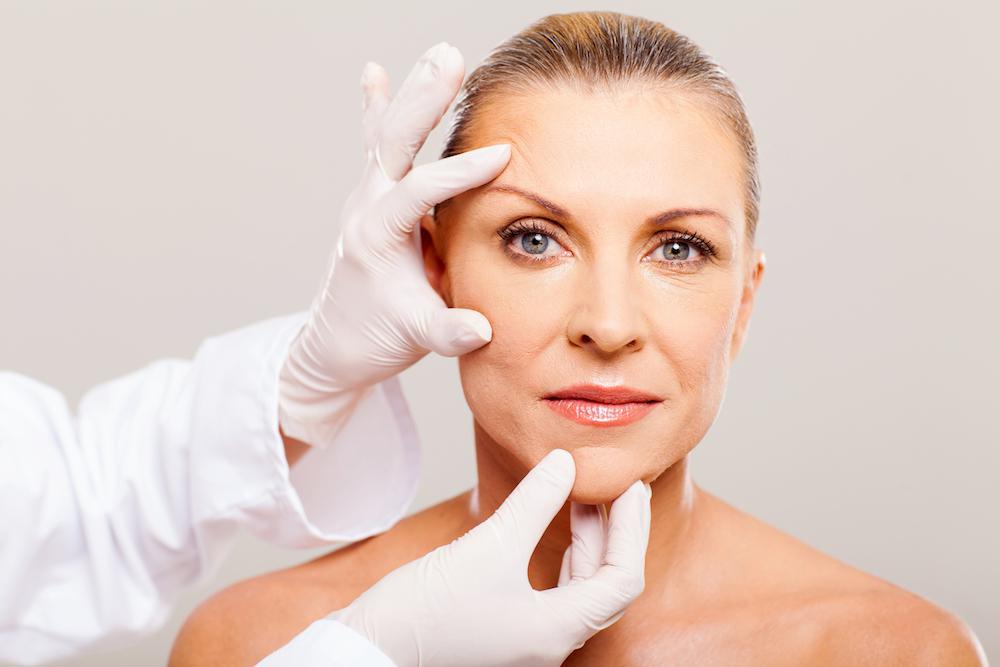
Today, the classic Coronal Forehead Lift is less frequently used in Los Angeles, although most Beverly Hills Plastic Surgeons feel that it delivers the most predictable and concrete results. During a Coronal Brow Lift, the plastic surgeon makes an incision, beginning at ear level and running across the top of your forehead and down the side of your head. If the patient is bald, the cosmetic surgeon may make a mid-scalp incision. The plastic surgeon then lifts the skin of the forehead, moving muscles and underlying tissues. The eyebrows may be lifted, and excess skin at the incision is trimmed away. The incision is closed through sutures or clips.
Maybe the most commonly used Technique of Brow Lift is the Endoscopic Forehead Lift. During an Endoscopic Forehead Lift, the cosmetic surgeon makes three to five short scalp incisions, instead of one long one, each less than one inch in length. He or she then inserts an endoscope – a thin flexible tube connected to a camera that is used to view and perform surgery through small incisions. By inserting another instrument into a different incision, the plastic surgeon lifts forehead skin, cuts muscles and underlying tissues that cause frown lines and may also lift the eyebrows so they are sutured into a higher position. Benefits of the Endoscopic Brow Lift include less scarring and numbness, and less severe lifting of the hairline. Endoscopic Brow Lift patients also generally experience less itching as an aftereffect than is true of a Classic Coronal Brow Lift.
Other procedures include the Trans-Palpebral Forehead Lift, by which the plastic surgeon disables the frown muscles through an eyelid incision. During the Direct Skin Excision Brow Lift, the facial plastic surgeon lifts the brow through excision of the skin above it. However, this procedure creates a visible scar at the brow line, and also has a high risk of creating an unnatural, surprised look.
Brow Lift/Forehead Lift is sometimes performed simultaneously with other procedures, such as Eyelid Surgery or resurfacing techniques to improve skin tone.
Benefits
- Lifts eyebrows so that the eyes appear more alert and youthful
- Reduces hooding of the upper eyelids caused by sagging brows
- Improves the appearance of vertical frown lines that form between the eyebrows
- Improves the appearance of horizontal forehead lines
Botox Brow Lift vs Surgical Brow Lift
The Botox brow lift is a noninvasive alternative to a traditional brow lift.
The Botox brow lift uses Botulinum toxin type A to smooth creases and lines in the forehead and also moderately lift the brows to a more attractive position. While effective at treating mild to moderate ptosis of the brows, a Botox brow lift is not a permanent solution to low hanging brows. The results last approximately 3-4 months. After this time, patients will have to return for more injections in order to maintain their results. A standard surgical brow lift, on the other hand, is longer-lasting since the brows are sutured in a higher position.
Botox brow lifts are attractive to some Southern California patients because there are no incisions, which means that there will be no scarring. Furthermore, there is no downtime associated with a Botox brow lift. Patients will be free to return to their normal activities right away. There may be some slight redness or swelling around the injection sites, but this can easily be covered up with cosmetics. Results are typically seen in 1-2 weeks.
Good Candidates
Do people think you’re frowning – when you’re not? Do you have an angry, tired or sad appearance? Do you have wrinkles across your forehead? Do the deep grooves between your eyebrows or heavy and drooping brows annoy you?
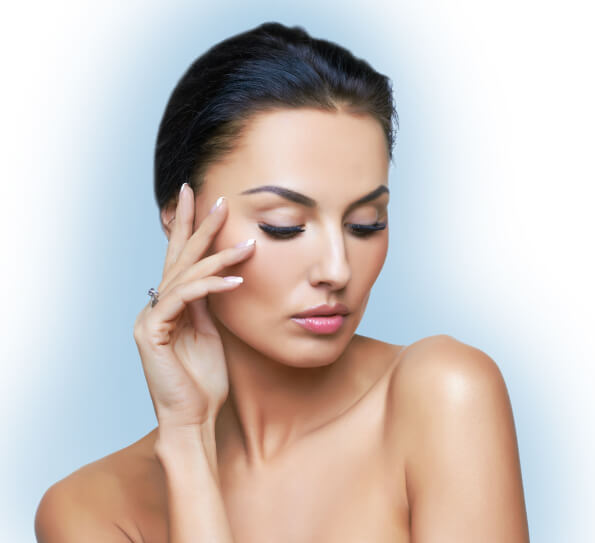
If so, you can achieve a more youthful, happy and rested appearance through a Forehead Lift or Brow Lift.
Sometimes, patients who think they need Eyelid Surgery discover that a Forehead Lift is better suited to their goals. In many men and women, the forehead and brow are the first features to show the inevitable signs of aging.
A Forehead Lift, also known as a Brow Lift, is a procedure that corrects drooping brows. It also corrects the lines and grooves that make a man or woman appear tired, angry or even sad. The end result is a smoother looking forehead, a refreshed appearance and the return of the eyebrows to a higher and more natural position.
Where do Forehead wrinkles or Frown Lines come from?
Hyperactivity of the forehead Frontalis Muscle (C) due to stress, prolonged reading, and sun damage results in the formation of forehead wrinkles.
Excessive squinting, stress, sun damage, aging, and chronic sinusitis can also attribute to the formation of deep frown lines by causing the Procerus (D) and Corrugator (E) muscles to stay tense and overly contracted.

Excessive squinting, stress, sun damage, aging, and chronic sinusitis can also attribute to the formation of deep frown lines by causing the Procerus (D) and Corrugator (E) muscles to stay tense and overly contracted.
Over activity of the Orbicularis Oculi Muscles (A & B) results in the formation of Crow’s feet at the sides of the eyes.
During a Forehead or Brow lift the all these muscles are weakened or disabled in order to smoothen the forehead and to allow the eyebrows to migrate to a higher normal position.
Who Is a Candidate for a Forehead Lift?
As with Eyelid Surgery, men and women who no longer wish to appear tired, older, angry or sad because of their aging features are Forehead Lift candidates.
Some of the features corrected by this procedure include wrinkle lines across the forehead, deep furrows between the eyebrows, deep frown lines, and sagging, heavy eyebrows. If necessary, the surgeon removes part of the muscle that causes vertical frown lines.
Generally, patients are between 40 to 60 years of age. However, men and women of any age who inherited the conditions mentioned above – such as a low, heavy brow or furrows above the nose — can benefit from the procedure. Wrinkling of the forehead and sagging of the eyebrows are part of the aging process.
Are There Non-Cosmetic Reasons for Forehead Lift?
Yes. Sometimes, trauma or nerve injuries can cause facial features to droop. Some patients concerned with extra skin of their upper eyelid actual have brows that are too low. The extra skin can fatigue the eyelids – sometimes to the point where patients tape their upper eyelid to their forehead in order to see. A Brow Lift can be corrective in these cases as well.
Where is the ideal brow position?
“Beauty is in the eye of the beholder.” Having said that, the ideal or the most aseptically pleasing position of the brows in women is at or just above the upper eye socket margin. Obviously, the brow is not a straight line, and it peaks at the outer margin of the Iris (point E). The medial and lateral edges of the brow (B & C) are at about the same level. If the medial part of the eyebrow is relatively too high it give an “exclamation or sad look.” On the other hand when the lateral edge of the brow is relatively too high it give the appearance of being mad or angry.
During your consultation Dr. Younai will review your treatment options for Forehead Lift or Brow Lift, including pros and cons of each procedure, potential risks and complications, recovery course, pre and post operative instructions, and esthetic outcomes. There are also many before-and-after pictures and high resolution images of Facial Plastic Surgery and Forehead Lift/ Brow Lift available in our photo gallery.
Brow Lift Techniques

Dr. Younai performs two types of brow lift procedures: endoscopic and traditional. The best technique for the patient will depend on a variety of factors and will be determined at the time of the consultation.
What Is an Endoscopic Forehead Lift?
Rather than making one long incision, your cosmetic surgeon makes three to five short scalp incisions, each less than one inch in length. He or she will then insert an endoscope, which is a thin, flexible tube through one of the incisions. It contains a light source and a camera that is connected to a television monitor. Another instrument is inserted through a different incision so the surgeon can then lift forehead skin, cut muscles that cause frown line, and cut other underlying tissues. Your eyebrows may also be lifted and sutured into that higher position.
Benefits of the Endoscopic Brow Lift include less scarring and numbness. Also, it doesn’t raise the hairline as severely as the traditional procedure. Another benefit of this type of lift is that patients generally experience less itching than is true of the Classic Forehead Lift.
What Is a Trans-Palpebral Forehead Lift?
This Forehead Lift is made through an eyelid incision. It utilizes this incision to permanently disable the frown muscles, lift the eyebrows and to relax the forehead Frontalis muscles.
What Is a Direct Skin Excision Brow Lift?
This is a Brow Lift by excision of the skin above the brow. Direct brow lifting can produce a good result for patients who cannot have a classic Forehead or Endoscopic Brow Lift. However, the closer the incision is to the brow, the greater elevation. Therefore, this procedure is used with great care because it can create an unnatural, surprised look. Also, it is not favored for those who don’t want a visible scar and because it may create an unnatural brow hairline.
What is a Thread Lift?
Contour Thread Lift™ and Feather Lift™ are relatively new techniques where barbed sutures are used to pull up and re-suspend sagging eyebrows. The advantage of this technique is that, they can be inserted through small stab incision in the hairline, and therefore the procedure can be performed under local anesthesia. It efficacy and long term results is not yet fully documented.
What Kind Of Incisions Are Best For Me?
As mentioned above, incisions can be at the hairline, behind the hairline, above the brow, mid-forehead or through the eyelid. Your cosmetic surgeon will discuss the pros and cons of each with you in order to help you choose which Technique would suite you the best.
Procedure
A certified anesthesiologist will administer the anesthesia prior to surgery.
The brow lift procedure will be performed under intravenous sedation or general anesthesia for patient comfort.
Dr. Younai will begin by marking the incision’s locations. Then when the patient is comfortably anesthetized, the appropriate incisions will be made. For an endoscopic brow lift, small incisions will be made along the hairline. For a traditional brow lift, Dr. Younai uses a “coronal incision” that extends from ear to ear behind the hairline. Next, the tissue and muscle underneath the skin can be adjusted to minimize the appearance of wrinkles. Then, the skin will be tightened, lifting the brows. Finally, the doctor will close the incisions with sutures. Prior to being released, the patient will be taken to a recovery room to be monitored.
Recovery
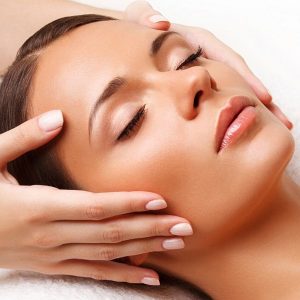
Brow lift patients will be able to return home following the procedure, assuming they have another responsible adult to drive them home that day and spend the next 24 hours with them for assistance. Prior to leaving, the forehead will be taped and bandaged to assist in healing. This will also help keep side effects such as bruising and swelling to a minimum. In some cases, a thin drainage tube may be placed at the surgical site to allow for the draining of excess fluids.
Dr. Younai will also provide the patient with further recovery instructions including:
- How and when to change the bandages
- Medications to take to assist in healing and minimize discomfort
- Common side effects and side effects to watch for
- How to contact the doctor during the recovery period
For the first few days following surgery, patients should keep their head elevated to minimize bruising and swelling. They should also avoid strenuous activity. However, Dr. Younai may advise patients on light stretching or exercises they can do to help with recovery.
In general, patients should plan on taking 1-2 weeks in order to allow for proper recovery.
After this period, patients should be able to return to work and their regular activities. Some bruising and swelling may remain, but this can easily be covered up with cosmetics. However, healing will continue for 2-3 months. The results from a brow lift are long-lasting but should be maintained by taking proper care of the skin and avoiding sun damage.
Dr. Younai will schedule a follow-up appointment to remove the patient’s sutures and further follow-up appointments to ensure that the patient is healing properly.
Additional Procedures
Eyelid Lift
An eyelid lift, also known as blepharoplasty, is a procedure that excises lax sagging skin on the upper eyelids and removes bags from below the eyes. However, it can be performed on just the upper or lower lids, depending on the patient’s needs. It helps make the eyes appear wider, brighter, and more alert, but has no effect on brow position. When combined with a brow lift, this procedure can completely rejuvenate the upper third of the face.
Facelift
A facelift, also known as a rhytidectomy, may be a good option for patients who are experiencing more significant signs of aging on the face. This procedure uses incisions around the hairline to access the underlying muscle and tissue structures. These structures are lifted and tightened to address the root cause of facial aging signs like wrinkles and sagging features. During this procedure, Dr. Younai will also excise excess skin. A standard facelift does not address the upper third of the face. Because of this, the procedure is often performed in conjunction with a brow lift for comprehensive results.
The Importance of The Type of Anesthesia That You Undergo
Like your surgeon, the anesthesiologist literally holds your life in the balance. It is therefore critical that you put your life in the best hands.
Many patients have preconceived notions about the type of anesthesia that is best for them. Unfortunately, these thoughts are often based upon hearsay, or upon informal research that has no scientific basis. While you are the final arbiter of your treatment, only an experienced physician can guide you properly in making the crucial decision about your anesthesia.
This is not guesswork! Allow your physician to explain your safest anesthesia option.
Many facilities employ trained nurse anesthetists. However, it is optimal to have anesthesia administered by an anesthesiologist rather than a nurse. Preferably, your anesthesiologist should be certified by the American Board of Anesthesiology.
The anesthetized patient must be monitored meticulously and constantly, with consideration for all medical conditions. The best person to do this is a physician who is trained and experienced in the practice of medicine, in the specialty of anesthesia. This is especially important in surgical facilities that operate independently. In such freestanding facilities, a nurse anesthetist might not have the adequate supervision of a physician anesthesiologist, or the support system required to properly address emergencies.

While having upper and/ or lower blepharoplasty performed under monitored sedation is very safe and comfortable, you should be skeptical about promises that extensive facial cosmetic surgery procedures can be performed under local anesthesia in an office procedure room, or even in an office surgery room. Having an extensive or multiple procedures performed under local or “twilight anesthesia” may not be safer than having it done under general anesthesia. On the contrary, the risks of this “twilight sleep” might be greater because procedures that take two hours under general anesthesia will take several more hours when you are inadequately anesthetized locally. The risks that your condition will become unstable will increase under this circumstance. Also, you will then have to deal with the side effects of the longer acting anesthetics that remain in your system, even after you go home.
During your consultation Dr. Younai will review your treatment options for Forehead Lift or Brow Lift, including pros and cons of each procedure, potential risks and complications, recovery course, pre and post operative instructions, and esthetic outcomes. There are also many before-and-after pictures and high resolution images of Facial Plastic Surgery and Forehead Lift/ Brow Lift available in our photo gallery.
Consultation

Dr. Sean Younai believes that clear communication between patient and surgeon is key to a successful procedure. Every consultation starts with a one-on-one conversation. During this time, Dr. Younai will ask the patient why they are interested in a brow lift and their goals for surgery. He will also ask about the patient’s complete medical history and any medications they use, including prescriptions, supplements, tobacco, alcohol, and drug use.
The second part of the consultation will consist of Dr. Younai performing a physical examination in order to determine the best method to achieve the patient’s goals. Dr. Younai will take measurements and photographs for further evaluation. He will then recommend whether or not the patient would benefit most from an endoscopic brow lift or a traditional brow lift. In some cases, Dr. Younai may recommend additional or alternative procedures that would better benefit the patient.
Cost
The cost of a brow lift will vary, depending on the extent of the procedure and whether or not the patient decides to combine the procedure with another treatment. Other factors that may influence the cost of the procedure include anesthesia, surgical facility costs, medical tests, and prescriptions. These factors can be discussed at the time of the consultation in more detail. At this time, Dr. Younai will also be able to provide a cost estimate. Contact us today to request a consultation.
FAQ
Will a Forehead Lift Remove Very Fine Lines?
No. As a rule, removal of fine wrinkle lines requires resurfacing of the skin with Laser or Dermabrasion. Similarly, acne scars, age spots, and smoker’s creases will not be alleviated by the lift but can respond to skin resurfacing. Also, the face and eyelids will not be tightened by a Forehead Lift.
Can Laser Resurfacing or Dermabrasion Remove Forehead Wrinkles?
While Laser resurfacing or dermabrasion helps to reduce the fine lines, the deep creases can only be affected by a forehead lift or a brow lift. During forehead lift the frown muscles are either removed or disabled. Therefore, the patient is no longer able to frown or deeply wrinkle their forehead.
How Long Does the Effects of a Forehead Lift last?
The longevity of a forehead lift result depends partially on the type and extent of the forehead lift performed. Fully disabling the frown muscles and relaxing the brow muscles is important in getting a long-lasting result. Despite this, usually the function of the frown muscles partially returns within several years But still, the forehead can remain relaxed for many more years.
What are non-surgical Options to forehead lift?
The tense frown and forehead muscles that cause the appearance of frowns or forehead wrinkles can be weakened by the use of BOTOX®. BOTOX Cosmetic™ is a muscle paralytic agent derived from the Botulism Toxin A which partially paralyses and thus weakens the forehead and frown muscles. In most people this injection needs to be repeated every three months.
Does Disabling the Frown and Forehead Muscles with Botox or a Forehead Lift/ Brow Lift “Freeze your Face”?
No. You don’t lose your facial expressions. The forehead and frown muscles are only relaxed in order to smoothen unwanted forehead wrinkles.
Can a Person Who Is Bald or Has a Receding Hairline Undergo a brow lift or Forehead Lift?
Yes. While results vary for every individual, those who are bald, or who have a receding hairline, can undergo the procedure. The incisions will simply be made in a different location (mid scalp rather than at the hairline) in these cases. An Endoscopic Forehead Lift can also be performed with incisions placed in the hair bearing temporal region. Finally, a Trans-palpebral approach might be the best option since it does not require any incisions in the forehead.
How Long Does A Forehead Lift Take?
The procedure generally takes between two or more hours.
What Kind of Anesthesia Will Be Used?
A Forehead or Brow Lift is performed under general anesthesia. See below for factors to consider in choosing an anesthesiologist.
Can a Forehead Lift Be Combined With Other Procedures?
As mentioned above, the procedure is often also performed with Blepharoplasty, or Eyelid Surgery, depending upon the needs and medical condition of the patient. Sometimes, it addresses issues of aging. However, if a patient has a tendency to have drooping skin in the eye area, this may interfere with or her vision. In these cases, a Brow Lift may be combined with Eyelid Surgery in a younger patient.
Your cosmetic surgeon may also recommend skin resurfacing techniques to be performed with a Brow Lift to improve skin tone. This may include the injection of fillers such as Botox to adjust the muscles in a way that will help your cosmetic surgeon to achieve your optimal results.

